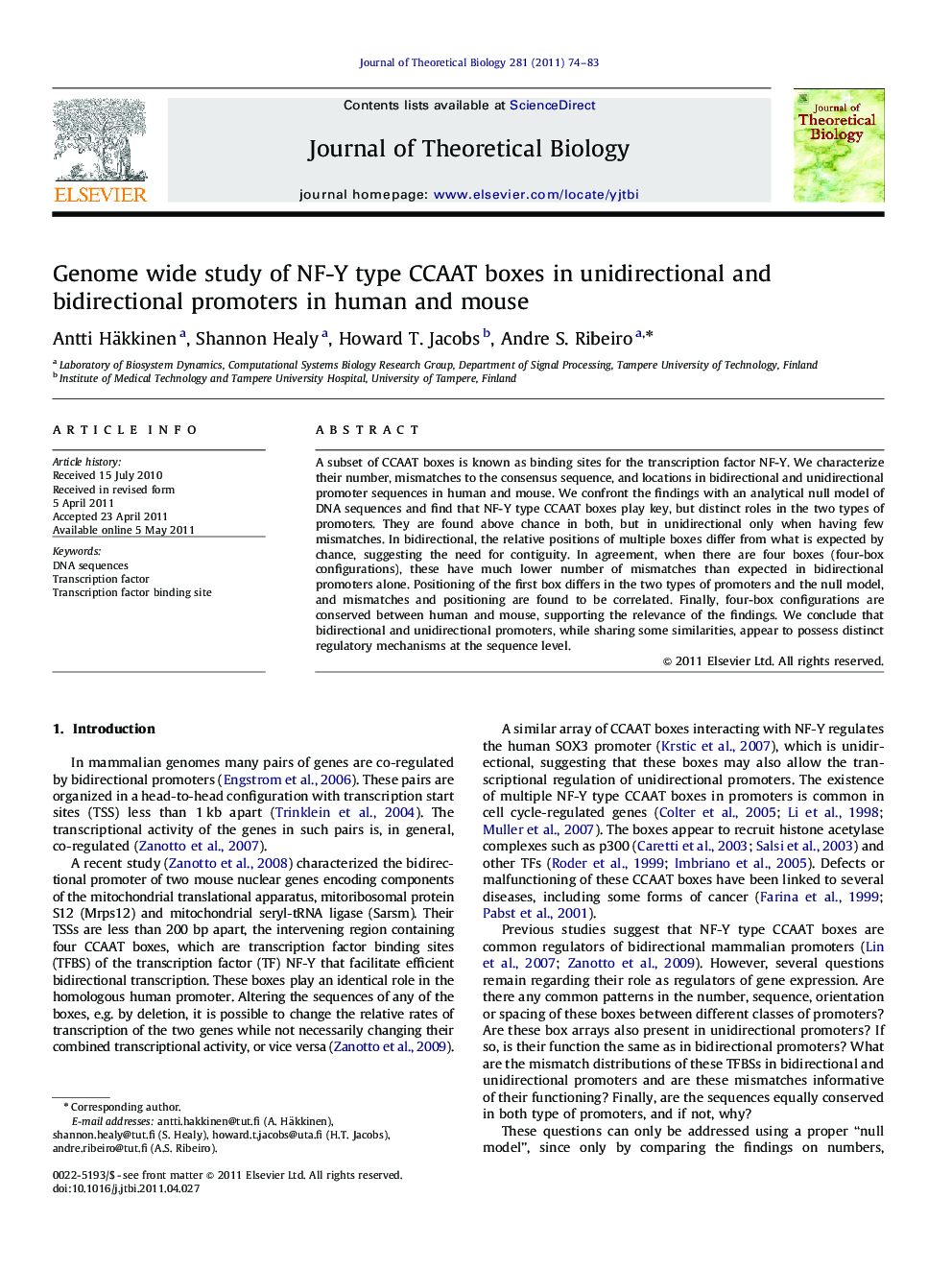| Article ID | Journal | Published Year | Pages | File Type |
|---|---|---|---|---|
| 4497011 | Journal of Theoretical Biology | 2011 | 10 Pages |
A subset of CCAAT boxes is known as binding sites for the transcription factor NF-Y. We characterize their number, mismatches to the consensus sequence, and locations in bidirectional and unidirectional promoter sequences in human and mouse. We confront the findings with an analytical null model of DNA sequences and find that NF-Y type CCAAT boxes play key, but distinct roles in the two types of promoters. They are found above chance in both, but in unidirectional only when having few mismatches. In bidirectional, the relative positions of multiple boxes differ from what is expected by chance, suggesting the need for contiguity. In agreement, when there are four boxes (four-box configurations), these have much lower number of mismatches than expected in bidirectional promoters alone. Positioning of the first box differs in the two types of promoters and the null model, and mismatches and positioning are found to be correlated. Finally, four-box configurations are conserved between human and mouse, supporting the relevance of the findings. We conclude that bidirectional and unidirectional promoters, while sharing some similarities, appear to possess distinct regulatory mechanisms at the sequence level.
► Bidirectional and unidirectional promoters differ in regulatory mechanisms at the sequence level. ► NF-Y type CCAAT boxes play key but distinct roles in bidirectional and unidirectional promoters. ► In bidirectional promoters, NF-Y type CCAAT boxes are often contiguous. ► Several NF-Y type CCAAT four-box configurations are conserved between human and mouse.
